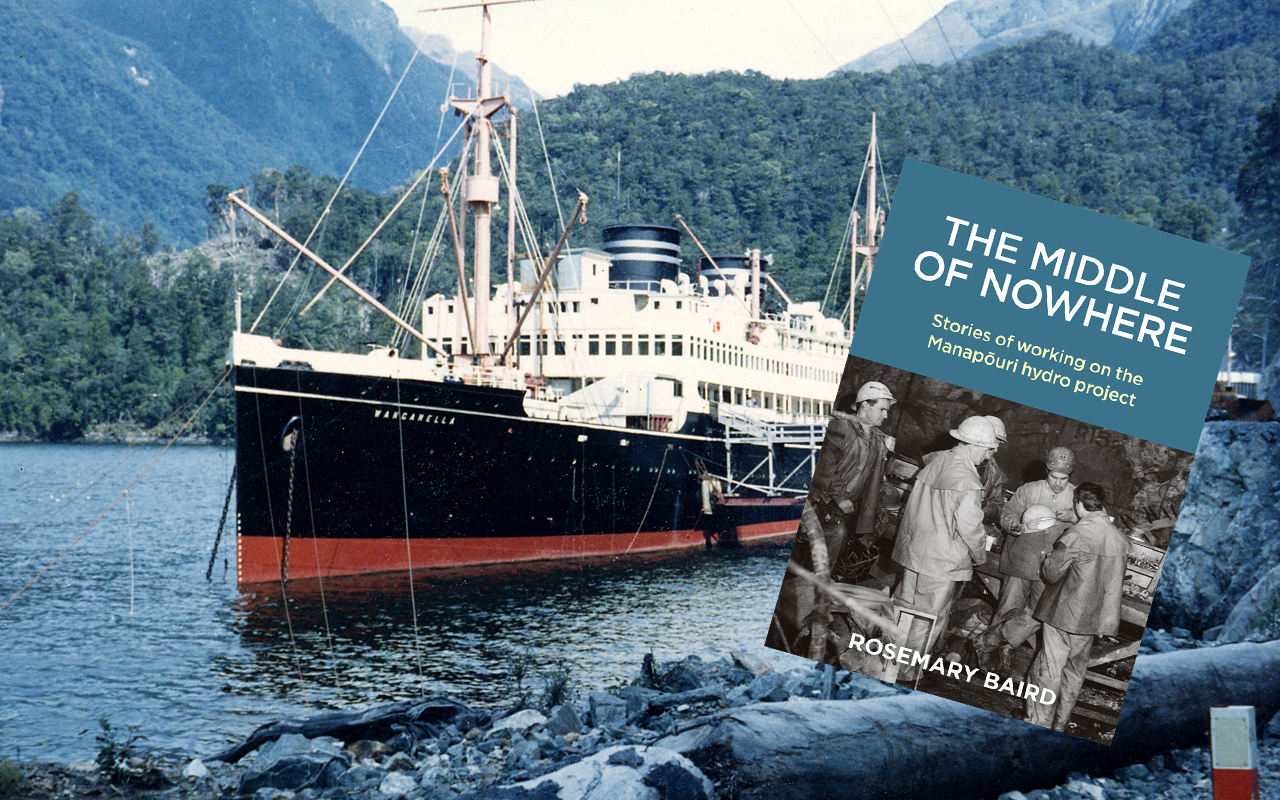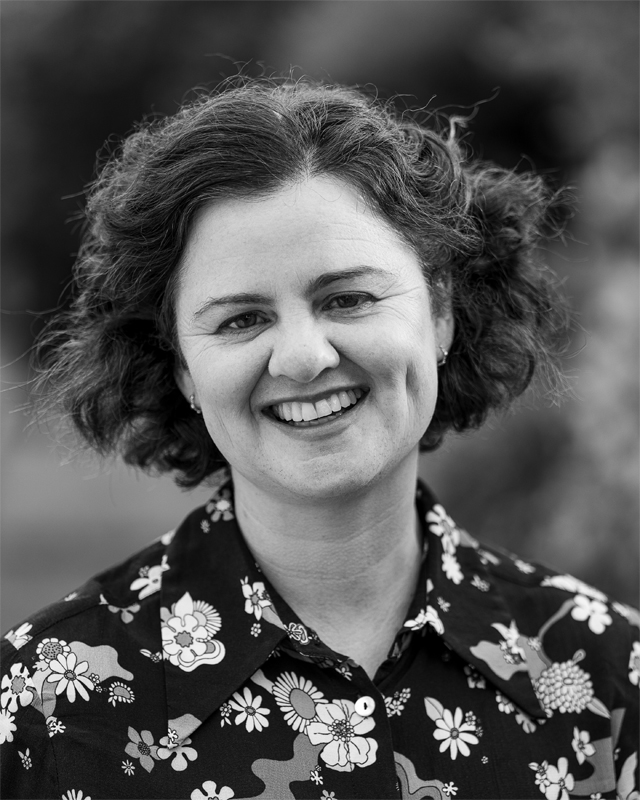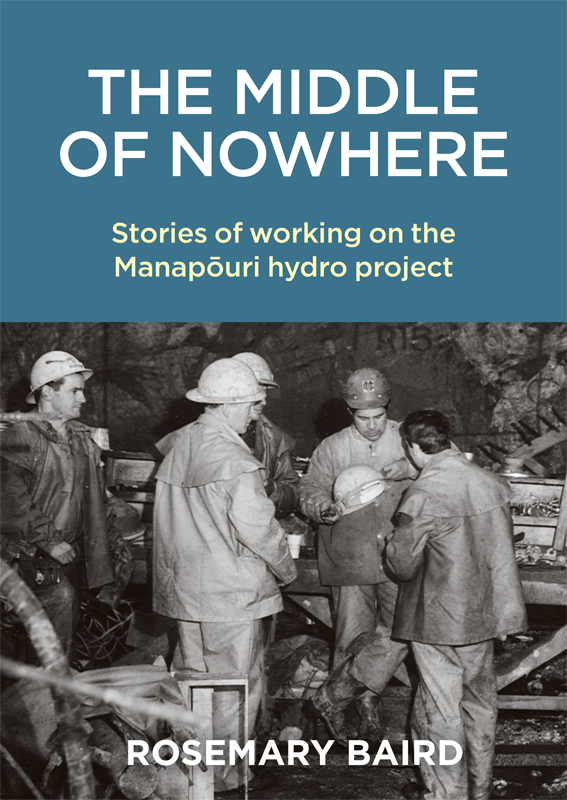Tales of hardy blokes and the Manapouri hydro project
Sue Fea © the Southland App
21 August 2025, 12:44 PM
 A new book is released today (22 Aug) telling the tales of those hardy blokes who broke ground in the 1960s to build the Manapouri Power Station. Photo: Peter Tetai/Supplied
A new book is released today (22 Aug) telling the tales of those hardy blokes who broke ground in the 1960s to build the Manapouri Power Station. Photo: Peter Tetai/SuppliedThey were hardy blokes, who hailed from all over the world, and they had to be.
The fascinating stories of the men who worked on the ground-breaking Manapouri Power Station project through the late 60s and their wives, who also endured isolation, are being released from today (22 Aug) in an intriguing social history book.
‘The Middle of Nowhere’, researched and written by Christchurch-based Heritage New Zealand senior outreach advisor Dr Rosemary Baird, over the past eight or nine years, is being launched at Invercargill Library today at 5.30pm.

The Middle of Nowhere author Rosemary Baird. Photo: Chris Hoopman
Baird will speak and share slides and priceless audio collected from some of the 18 men and women that she interviewed for the book.
She will also speak and share at the Dunedin Central Library launch at 11.30am on Sunday (23 Aug).
While available in bookshops, the book is also being sold as a fundraiser through Southland’s Central & Western Archive, which shared many valuable archives on the project with Baird during the research phase.
Archive manager Suzie Best says she’s “stoked to support the launch” after the Archive acted as research support, sharing source records on the Manapouri project, including files from engineering companies and surveyors, and providing other assistance.
It would now be releasing the second phase of its own ‘Source to Sea’ project on power projects along the Waiau River, covering Manapouri Power Station.
The Monowai section with its online information and displays was released for the Monowai Centennial earlier this year.
Best says the voluntary Archive is hoping to raise several thousand dollars for its work.
“We’ve started presales of Rosemary’s book, focusing on mail orders throughout Australasia,” she says.
“If you buy it off us then you’re supporting the preservation of the local district’s history.”

The Middle of Nowhere by Rosemary Baird was released on 22 August. Cover Photo: New Zealand Archives
The book’s been a labour of love for Baird who hopes it will inspire people to realise they have old photos and stories well worth saving.
“This goes back a very long time to when I was doing my PhD on New Zealanders who’d migrated to Australia,” she says.
“I was interviewing someone who’d worked on the Manapouri project in Melbourne, who said he left as he was so tired of working in cold, isolated conditions, but he shared some amazing funny stories. The book starts with my meeting him.”
The former worker recounts helping an Irish worker who was using a blow torch, powered by oxyacetylene lines which the keas were pecking holes in.
“Frank tried to help and when he returned to the Irishman he was sitting crying. He’d thrown his helmet at the keas in desperation, but they tore into that too.” Baird says only the hardy remained on the project, which was completed in 1971.
The stories stuck with her after finishing her PhD.
“I realised that there wasn’t much social history on these projects.”
She initially did 18 oral histories archived at the National Library then when she was able to secure a Ministry of Culture and Heritage grant and find a publisher.
She used that as a foundation, expanding her research.
The Archive had been very helpful as had old publications like the Wanga Tella and Manapouri Messenger, as well as library archives around the south and in Wellington.
The Wanga Tella was the newsletter on the floating worker housing ship, Wanganella, moored in Deep Cove in Doubtful Sound. Other men and their wives lived at the hydro village, some in the men’s camp at West Arm.
Baird says the biggest challenge they all faced was the danger of the job in what was a very challenging and unpleasant workplace environment with rain and water underground.
“The isolation was the hardest part and some of the men didn’t leave West Arm and Deep Cove for a year,” she says.
“They didn’t see friends and family for a long time.”
Writing the book with two small children, Baird also interviewed the women who had to live in the hydro village, many with children.
“There was no doctor there and if they were having a baby they had to travel to Invercargill in an ambulance.”
The underground hydroelectric power station on the West Arm of Lake Manapouri was primarily built to supply electricity to the Tiwai Point Aluminium Smelter near Bluff.
The construction required the excavation of almost 1.4 million tonnes of hard rock to build the machine hall and a 10 km tailrace tunnel.
It’s the largest hydroelectric power station in NZ, and the second largest in the country.
The 60s project sparked major controversy and environmental protests through the Save Manapouri Campaign, protesting raising the level of Lake Manapouri to increase the station’s hydraulic head.
A second parallel tailrace tunnel was completed in 2002 to increase the station's capacity.
Baird’s book features more than 100 images.
She will be on hand for book signing and purchases this weekend and also hopes to do a special talk and launch at the Te Anau Library sometime in the future.
The Middle of Nowhere book is $55 and can be purchased by emailing [email protected]